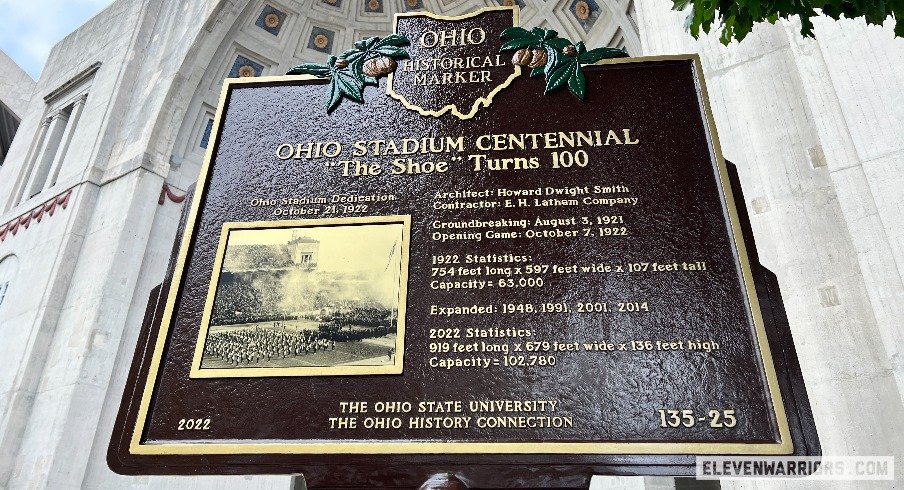Ohio Stadium is one of college football's most storied and tradition-rich venues.
Affectionately nicknamed the Horseshoe or the House That Harley Built by Buckeye fans, Ohio Stadium was constructed on the banks of the Olentangy River in Columbus, with the venue's first game between Ohio State and Ohio Wesleyan on Oct. 7, 1922.
Almost 100 years later, the stadium is now a landmark in the state of Ohio, as a historical marker was installed Wednesday outside the south rotunda of the stadium across the street from St. John Arena. The marker features the names of the architect and contractor who built Ohio Stadium – Howard Dwight Smith and the E.H. Latham Company – and the statistics of the initial build before expansions in 1946, 1991, 2001 and 2014.
The brown plaque also states that the Horseshoe originally seated 63,000 fans. As of 2022, Ohio Stadium's seating capacity of 102,780 is the fourth-largest in the nation, though the attendance for three of the Buckeyes' first four games this season (Arkansas State; 100,067) has exceeded that number.
On Saturday, Ohio State's fifth home game will be against Rutgers. The contest will mark the celebration of the century-old Horseshoe, as the Buckeyes will be traveling to East Landing, Michigan, for a battle with the Michigan State Spartans on the official anniversary. It will also be the homecoming game for the football program.
According to the Ohio History Connection, more than 1,700 historical markers exist in the state. Ohio Stadium now accompanies Jesse Owens Memorial Stadium – where the Buckeyes play soccer and lacrosse and compete in track and field – as the only sporting venues to earn historical status in Ohio.


